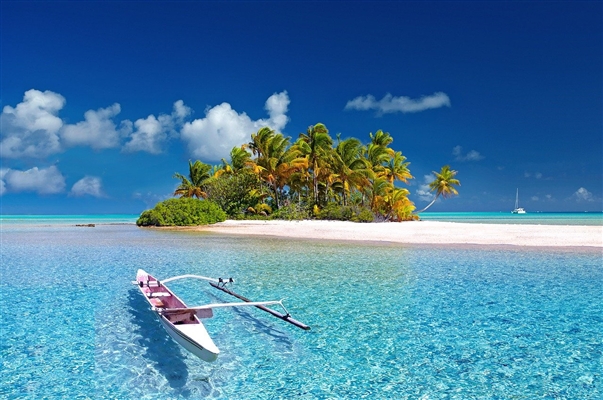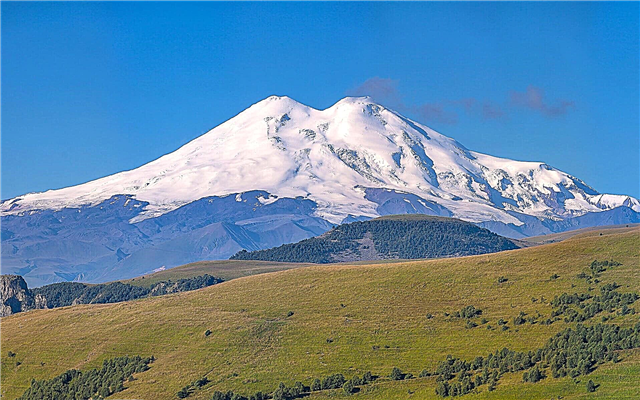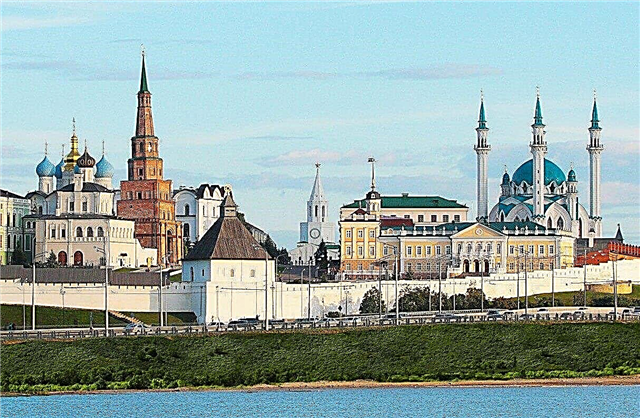Tatarstan is one of the most "balanced" regions of Russia in terms of attractions. Here are collected a variety of museums, monuments of architecture and nature, relics that emphasize the national flavor of local peoples, and international rarities. There is no less choice in terms of historical periods than in topics.
Much attention is paid to the preservation of traditions in the republic. Attraction of tourists is an important direction in the politics of Tatarstan. If we add to this the developed infrastructure and modern service, it becomes clear that traveling around the district is pleasant and interesting. Don't just focus on big cities. Outskirts and small settlements also have something to offer guests.
The most interesting and beautiful places in Tatarstan
List, photos with names and descriptions of popular attractions in the region!
Kazan Kremlin
Built in the X-XVI centuries. The total area of the territory is 15 hectares. The complex consists of monuments of history, architecture and culture. The towers and walls have undergone changes when compared with the original building: even during the restorations, changes were made. Among the main attractions stand out: the white palace church, the presidential palace, the Kul-Sharif mosque, the Cannon yard complex and others. Now it is the residence of the President of the Republic.

Sviyazhsk
Historic settlement, founded in 1551. Located on an island. At the present time it has the status of a village. All sorts of sights are collected here, including four monasteries and a monument to victims of political repression. The Assumption Cathedral is protected by UNESCO. These places have good tourist prospects. There will be enough local values of rarities for a full-fledged museum.

Reserve "Settlement Bulgar"
The year of foundation is 1969. The buildings assembled here belong to the X-XIII centuries. Some belong to the Golden Horde, while others belong to the Volga Bulgaria. Some of the buildings are for religious purposes, some are for economic purposes. The cathedral mosque is the decoration of the Bulgar. Nearby there are two mausoleums, and a little further - a small minaret. In the center of the settlement, the researchers found the khan's baths. The handwriting and style of that time can be seen in the interior decoration.

Devil's settlement in Elabuga
The approximate time of construction is the 10th century. Initially, it served as a fortification redoubt for the local tribe. In 1867, the building underwent a major reconstruction. By its beginning, it was almost completely destroyed by local or time. The remaining relatively intact tower was rebuilt on the old foundation and covered with iron. At the same time, windows appeared in the upper half.

National Museum of the Republic of Tatarstan
Opened in 1894. The main fund exceeds half a million exhibition copies. Archeology, numismatics, rare books, negatives, jewelry, weapons, natural history - there is a lot here. Collections related to the local flavor are considered especially valuable: for example, Likhachev's Bulgar collection. In addition to the permanent exhibition, temporary exhibitions are held.

Old Tatar Sloboda
Located in the central part of Kazan. Its heart is Yunusovskaya Square. The architectural ensemble for the most part consists of the houses of the nobility of the city. The complex complements public buildings, mosques, hotels and even a church. There is a bazaar market on the territory of the settlement, there are also operating industrial enterprises. Some buildings have changed their purpose, while others remain unchanged in all respects.

Al-Marjani Mosque
Built in the middle of the 18th century in the Baroque style. Its construction was the beginning of the adoption by the monarchs of Russia as a multi-confessional state. It is named after the imam who served in it for almost forty years. The gravestone of Muhammad-gali bey is the main local relic. All kinds of events of the Muslim community related to traditions and rituals are held on the territory of the mosque.

Temple of all religions
Located in the village of Old Arakchino. Construction stretched from 1992 to 2013. This place is not religious in the full sense of the word. Rather, it is a monument to various world confessions. Rituals and services are not held here, the building is not consecrated or recognized by any religion. This does not prevent it from being a popular attraction both because of the idea and because of the architecture.

Raifsky Mother of God Monastery
It was first mentioned in chronicles in 1613. Hermits were founded near Kazan. At first, the monastery was completely wooden, after a big fire, there was a rebuilding, and stone details began to appear with each new repair or reconstruction. After the revolution, the monastery was closed. The revival took place in 1991. There are several temples on site, as well as a boys' orphanage.

Volzhsko-Kamsky reserve
Founded in 1960. The total area exceeds ten thousand hectares. The purpose of its creation is to preserve the unique ecological systems of the middle Volga region. The researchers are engaged in the maintenance of the natural environment, the restoration of natural complexes, educational work and others. There is a Museum of Nature and an arboretum on the territory. There are special observation platforms along the entire perimeter.

Natural monument "Dolgaya Polyana"
Year of creation - 2000. The area of the territory is almost four hundred hectares. The Molostovs' estate is the central part of this natural and historical monument. It is surrounded by all kinds of gardens and park areas. Here you can get acquainted with the life and traditions of the Tatar people. As part of the guided tour, there is an option for a national lunch. The color of nature meets customs and antiquities in one place.

Blue Lakes
Natural reserve on the outskirts of Kazan and adjacent areas. The area is 1910 hectares. It contains the lakes of the same name. There are three reservoirs in total, they are not connected with each other: Big blue, Protochnoe, Small blue. The lakes are fed by underground waters, there are no surface tributaries. Common trees in the area are birch, aspen, pine. There are about a hundred plant species in total, animals are even smaller, but there are rare ones.

House-Museum of Ivan Shishkin (Elabuga)
Dedicated to the work and life of an outstanding artist. He is from these places, and the house itself belonged to his family - poor merchants. The main exposition is displayed on both floors of the museum. The atmosphere of those years has been recreated. In two halls, some originals of Shishkin's works are collected, both paintings and graphics. His office looks authentic; there are many personal belongings of the master in the living room.

Elabuga Local Lore Complex
It has spacious halls with different exposition themes. Much attention is paid to the history of the city and the peculiarities of these places. The furnishings and decoration of houses of different time periods have been recreated. Interactive materials and new technologies help to plunge into the atmosphere. Even a model of Yelabuga was built in compliance with the scale and small details. The complex includes a live corner and a gift shop.

Bread Museum in Bolgar
Opened in 2012. Tells the history of agriculture and bread baking in Tatarstan. The expositions repeat the decoration of the main buildings for these types of work: a mill, a bakery, a manor house, a smithy and others. The stands showcase original items, some of which were found during excavations. Visitors can try on the images of workers. One of the parts of the exhibition is the traditions and rituals of the Sabantuy holiday.

Mount Chatyr-Tau
It is located on the territory of the sanctuary of the same name. Height - more than 321 meters. Although many consider Chatyr-Tau to be a ridge, this is not the case. Origin comes to the fore. The mountain was formed due to erosion, so it is an outlier.The fauna is not rich, but there are representatives of species with a small halo of distribution. Wide slopes and other terrain features attract paragliders.

Lake Kara-Kul
Located on the right bank of the Yarak-Churminka River. The reservoir is closed. Food is underground. Its average depth is 8 meters, the deepest point is 18 meters from the surface of the water. There are many fish, without rare breeds. Although the name is translated from the Tatar as "Black", the water in it does not have a characteristic color. In the past, there was a dense forest on the shore, and its reflection made the surface dark and gloomy.

Yurievskaya cave
First explored in 1953. The length is about a thousand meters. Half of the cave is open to inspection. There is only one entrance. Gypsum was mined nearby in the past. The cave did not always have such output characteristics and it is likely that they will change. To open new halls, even full-fledged excavations had to be carried out. Other natural sites of this level are closed to outsiders and tourists.

Open-air museum "Tatar avyly"
On a specially designated area, houses and buildings that characterize local characteristics are collected. This concerns the national issue, traditions, handicrafts characteristic of this region. Tourists can attend master classes, feed and pet animals in a small petting zoo, examine in detail the entire exposition, both with and without a guide. Holidays and custom events are also held here.

Memorial complex of Gabdulla Tukay
Opened in the village of New Kyrlay in 1976, before that it functioned on a voluntary basis at the school. Dedicated to the life and work of the outstanding Tatar poet. The estate itself is two-story. There are six halls inside, where exhibits are exhibited: authentic things, documents, publications, etc. Here we are talking not only about Tukai, but also about his native lands, fellow countrymen, peculiarities of the time.

Nikolsky Cathedral in Chistopol
Built in 1838. The five-domed cathedral is a typical representative of the classical style. During the period of the USSR, it was closed, then opened, then changed its purpose, having even been a warehouse. In 1990 it was returned to the church. Reconstruction began. During the work, small details and early descriptions of the monastery were taken into account. Thanks to this approach, it was possible to do almost without changes and return the cathedral to its original appearance.

Kazan Mother of God Monastery
Founded in 1579. Initially, as a female, now it has been retrained as a male. After the revolution, a period of decline began: the territory was divided into parts and given for a variety of needs. The buildings and buildings were returned to the ownership of the ROC not immediately, but in stages. Only in 2005 were the monks able to occupy their cells here. The main relic is the icon of the Kazan Icon of the Mother of God, which is associated with many legends.

Bilyarskoe settlement
It is located on the territory of the village of the same name. It is part of the reserve. This site was once a successful trading city. The excavations are now completed here. Information plates with historical information and explanations for visitors are installed throughout the territory. A little further there is a museum, where artifacts found by researchers are collected.

Peter and Paul Cathedral in Kazan
Founded in the first half of the 18th century in the Russian Baroque style. The monastery was visited by all the rulers of the country, from Catherine to Nicholas II. The bell tower was built next to a separate building. The clergy's house is also nearby. The cathedral has gone through a whole series of fires, restorations and renovations. The latter is dated 1989. There are many relics: these are icons and particles of the relics of saints.

Kremlin embankment
Completion of construction - 2015. Located in Kazan. It is exclusively pedestrian. It is used not only for walks by locals and tourists, but also for events. So the embankment became an observation deck during competitions and major events. Nearby are restaurants, cafes, shops and so on. Entrances and approaches to this area are very convenient.

Farmers' Palace
Located in the historical center of Kazan. The construction was completed in 2010. It fits perfectly into the architecture of the palace square, although the controversy over its appearance does not subside. Has domes, columns, carved windows. Full compliance with the Bozar style. At night it is illuminated with multi-colored lights. At the moment, departments, ministries and organizations sponsored by them are based in the palace.

Bauman street
Located in the historical center of Kazan. Completely pedestrianized. The total length is 1885 meters. It began to take its current form in the early 90s. The street is a place for walks, trade, and public events. There are cafes and restaurants, souvenir shops and more prestigious boutiques here. From here, many other attractions of the city are within easy reach.

Victory Park in Kazan
Founded in the 70s of the last century. The total area is approximately 50 hectares. At the very beginning, there were only swampy lands here. They were planted with trees and shrubs, and the number of seedlings in 1418 was not chosen by chance: the war went on for so many days and nights. The memorial was built in 1995. The complex includes: an eternal flame, a stele, commemorative plaques, monuments and numerous alleys. The park is suitable for parades.

Nizhnekamsk Cathedral Mosque
Built in 1996. Located in Nizhnekamsk. The mosque has four minarets. In addition to prayers and ceremonies, the building is used for other purposes. The second important function is education. Therefore, a community center is open nearby, there is its own library, and a hotel also operates. The contours of the mosque are not quite typical: this is done to harmonize with the surrounding modern residential buildings.

National Park "Nizhnyaya Kama"
Founded in 1991. The area is over 265 square kilometers. It is located in the Kama valley. The purpose of creation is to preserve and restore the unique local climatic zones. The plant and animal worlds are diverse, this is due to the fact that the park is located at the intersection of three climatic zones. The place is popular with eco-tourism lovers. Several interesting permanent routes have been developed.












